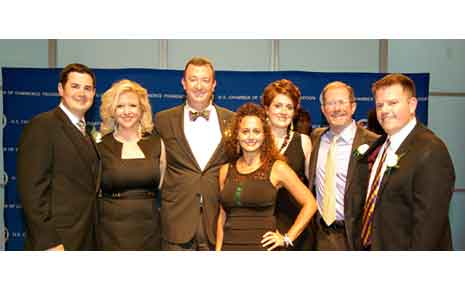Traditionally, issues relating to workforce development (getting the right employees) and economic development (recruiting and retaining the right employers) have been tackled by separate organizations, each with its own unique culture, focus and objectives.
More often these days, these two groups are beginning to work together in a focused, united effort to solve workforce development issues that impact economic development. In fact, Smart Solutions Group, a well-known economic development consulting firm, stated in a recent article, 'If you get both groups to focus on the same issue, you get a better solution than if they approach the issue separately.'
Not only are the solutions better, the funding is better as well. Instead of competing against each other to secure funding from the same pool of potential investors, workforce development and economic development groups that work together are able to provide investors with a single, well-rounded strategic solution to fund.
One of the reasons that these partnerships lead to such successful funding initiatives is the level of open communication and collaboration required. As stated in the International Economic Development Council (IEDC) report Raising the Bar Together: Successful Strategies for Workforce and Economic Development Collaboration, 'Such partnerships are predicated on goal alignment between not only workforce and economic development, but also between other stakeholders like businesses and educational institutions.'
Convergent has long noted that listening is key to communitywide engagement, a critical component in any successful capital campaign. When you make sure that all stakeholders are involved in developing the plan and have a regular chance to communicate with each other regarding their needs, questions and concerns, you will increase the sense of ownership and commitment to making the plan succeed, which in turn means making the financial investments necessary to ensure success.
One example of how listening to stakeholders can foster collaboration and enhance fundraising campaigns can be found in our recent work in North Carolina with the Davie County Economic Development Commission (DCEDC). During the feasibility study, a local foundation executive told us their main focus was on middle and high school education advancement programs, and if the EDC incorporated those components, they would support the campaign.
We communicated this and other community leader concerns regarding workforce development to DCEDC, which then reassessed the various elements of their campaign and added in a new strategic initiative: The Partnership for Workforce Development. This collaboration, which includes the Davie County School System and Davidson County Community College, will include programs such as two-week internships for teachers at local businesses, where they will gain a better understanding of workplace culture and employee expectations (including technical and interpersonal skills) and then incorporate what they learn into their curricula to better prepare students for the 21st century workforce.
Thanks to the DCEDC's willingness to listen to and immediately address community concerns, the 'Together We Are Davie' capital campaign met its goal, raising more than $935,000 to date. Better yet, The Partnership for Workforce Development was formed and is fully funded by the campaign.
To learn more about how to integrate workforce development in to your economic development program of work, we recommend reading Smart Solutions Group's Workforce Development for Economic Developers series, which delves into detailed discussions of skill gaps, skilled worker shortages, the workforce information that site consultants and business executive want, target cluster profiles, and more.
To learn more about the best ways to raise money for workforce development programs, please contact us for a consultation.






